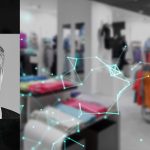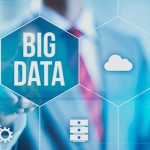
BIG Expectations: 15 Retail Experts tell us what they expect from NRF 2019
Manthan’s Question:
What big retail idea do you hope to see at NRF RETAIL’S BIG SHOW 2019?

Matthew Shay (@NRFNews)
President and CEO, National Retail FederationRetailers are constantly evaluating and implementing new technology that improves the customer experience, both online and in store. There is so much opportunity for retailers to integrate voice intelligence, and we plan to see examples of this come to life at NRF 2019: Retail’s Big Show.

Bob Phibbs (@theretaildoctor)
www.RetailDoc.comI’m looking forward to hearing new ways retailers are dealing with 70% cart abandonment online. Just sending more coupons within a few hours doesn’t seem to be working. That and innovative ways the human touch is returning as benchmarks of customer service.

Joe Skorupa (@joeskorupa)
Editorial Director, RIS NewsA big idea I would like to see presented at the NRF Big Show 2019 is the consumer genome. Personalized marketing based on a retailer’s available data has had only mediocre success. What is needed is the creation of a consumer genome that enables retailers to sequence, analyze and interpret the habits, preferences and behaviors of shoppers. Humans are complex and retailers who once thought they were drowning now must realize they not have enough data or do not have enough of the right data.

Doug Stephens (@RetailProphet)
retailprophet.comWhat I’d like to see at NRF 2019 is a dialogue around the power of physical stores as a media channel and the ways in which pioneering companies like Nike, B8TA, Dyson and others are designing and measuring their physical spaces and customer experiences in new and dynamic ways.

Andrew Busby (@andrewbusby)
Retail Analyst & Keynote SpeakerI’m hoping to see the store of the future. Not a box selling stuff but an immersive space, inviting me to spend time there through a combination of intrigue, excitement, theatre, inspiration topped off with a light sprinkling of magic. Yes, I’m hoping to see the store of the future.

Nicole Leinbach Reyhle (@RetailMinded)
Retail Minded, Founder& Publisher, Independent Retailer Conference, Co-FounderAt the upcoming NRF Retail’s BIG Show, I expect to see a lot of action within the payments category. There are a variety of innovative, exciting solutions that are available to merchants to help streamline but also strengthen security when it comes to accepting customer payments. As consumers demand more precise and effective shopping experiences, this specific space is one that retailers should not overlook. I anticipate at the NRF Retail Big Show there will be a variety of conversations surrounding payments and ways to best support consumers across the generations and across their preferences when it comes to both buying online and in-stores.

Greg Buzek (@gregbuzek)
President – IHL Group, Advisory Board – Retail Orphan InitiativeI expect to see major solutions around customer engagement and customer experience. Retailers have been spending quite bit on unifying their channels in the past few years, but with 55% of US Households having Amazon Prime, they must give reasons for consumers to actually visit stores. So areas of inventory accuracy, speed of service and positive, engaging experience.

Tony D’Onofrio (@tonycdonofrio)
CEO of TD Insights LLCNRF19 arrives at a critical time for retail – a positive USA holiday season, Amazon at an inflection point, and the end of an over-hyped retail apocalypse. The future of retail includes increased personalized branding and immersive customer experiences through technology. Which companies have stepped-up to this challenge in 2019?

Caroline Baldwin (@cl_baldwin)
Editor – Essential RetailOne topic I hope to see take centre stage at this year’s NRF is sustainability. Be it on the conference agenda or technologies showcased at the Expo. Retailers are crying out for solutions to help them to improve their businesses to become environmentally friendly, as shoppers have finally woken up in 2017 to the realisation that we need to be more mindful in our consumption of goods if we want our planet to last for generations to come.

Steven P. Dennis (@StevenPDennis)
President & Founder, SageBerry Consulting, LLCAt the NRF Big Show I’m looking to see what retailers that are trapped in the boring middle are doing to become more truly customer relevant and remarkable.

Diane J. Brisebois (@LoveRetail)
President & CEO, Retail Council of CanadaAt NRF’s Big Show I will be looking for innovative e-commerce and brick-and-mortar solutions in marketing and personalization – how retailers communicate, via different platforms, with customers in a way that enables loyalty, while managing privacy guidelines, increasing the coolness factor versus the creepiness sometimes associated with personalized messaging – ultimately leveraging analytics solutions to truly deepen the bond between brand and customer.

Debbie Hauss (@dhauss)
Editor-in-Chief, Retail TouchPointsI am hoping to see great ideas to help frontline brand ambassadors – retail store associates – become more motivated, empowered advocates. It’s not a new concept, but it is increasingly and vitally important for retailers seeking to succeed as omni channel marketing retailers. Some technology/solutions I’ll watch for include: empowered scheduling, new mobile initiatives and unified commerce strategies.

Melissa Gonzalez (@MelsStyles)
Award winning retail strategistFor NRF 2019, I am looking forward to seeing more applications of augmented reality outside of beauty. It’s been truly transformative to the traditional experience of trying on makeup looks and new products so interested to see how other categories can truly benefit from it. And as the usage grows, how we can glean actionable data from customer interactions.

Cate Trotter (@insidertrends)
Head of Trends at Insider TrendsLess customer-facing tech and more conversation-supporting tech. There’s too much focus on shiny gizmos that are used to patch poor store experiences. I’m hoping to see tech that quietly sits behind the scenes, allowing for more interesting (and more informed) conversations with customers. Done right, it doesn’t just build rapport – it works like magic!

Cathy Hotka (@cathyhotka)
Cathy Hotka & Associates, LLCThe biggest opportunity for retail going forward is leveraging customer and transaction data for meaningful marketing. I’m looking forward to talking with innovative technology companies that can make sense of this data and help create personalized outreach that builds new business.







 An awareness of Customer Lifecycle in the context of Product and Marketing Lifecycle allows the marketer to broaden his horizon and not only to predict the next logical purchase, but in ensuring that the Events of Marketing Relevance in the Customers’ life are in the radar. The intersection also provides for successful NPI (New Product Introduction) and increased brand adoption among customers. As the customer advances in her journey, the product and marketing lifecycles should be aligned in creating relevant offers and responsive price-points that win customer delight. “Consumers are not always selfish, rational and independent agents but instead they exhibit a strong interdependency and limited or “bounded” rationality”, a study on Consumer Decision making reveals.
Marketers today are gearing up to exploit the Events of Marketing Relevance, as they present themselves. To uncover these events it is essential that an inclusive and holistic view of products, marketing and customers are built, monitored and aligned. These need not walk in distinct directions away from each other, the marketer’s craft is now ably supported by the right customer analytics products and efficiencies to bring harmony into it and unearth opportunities unbound.
An awareness of Customer Lifecycle in the context of Product and Marketing Lifecycle allows the marketer to broaden his horizon and not only to predict the next logical purchase, but in ensuring that the Events of Marketing Relevance in the Customers’ life are in the radar. The intersection also provides for successful NPI (New Product Introduction) and increased brand adoption among customers. As the customer advances in her journey, the product and marketing lifecycles should be aligned in creating relevant offers and responsive price-points that win customer delight. “Consumers are not always selfish, rational and independent agents but instead they exhibit a strong interdependency and limited or “bounded” rationality”, a study on Consumer Decision making reveals.
Marketers today are gearing up to exploit the Events of Marketing Relevance, as they present themselves. To uncover these events it is essential that an inclusive and holistic view of products, marketing and customers are built, monitored and aligned. These need not walk in distinct directions away from each other, the marketer’s craft is now ably supported by the right customer analytics products and efficiencies to bring harmony into it and unearth opportunities unbound.

 The first step of discovering the significant intersection lies in how accurately and timely a marketer is able to map streams of customer data across the multiple points the customer interacts, such as, viewing the collection online, visits to the store, PoS data and loyalty data, to name a few. Once this data is accurately captured and minutely analyzed, some unique patterns could be discovered in buying behavior which will also indicate the different journeys that various customer groups undergo. While many of the patterns may point the usual, a keen eye will reveal some unique events. These events either demonstrate convergent or divergent behavior, understanding of which is gateway to customer relevance.
It is at these events that marketing programs need to be aligned to influence the purchase behavior of the customer, so a new brand could be introduced or the customer can be presented with a suitable offer on a completely new product category.
Path to profit goes through the milestones of customer relevance and endearment. If as a marketer we are relevant in the moment that matters, we are sure to stay in her mind longer. And, as we could see, customer
The first step of discovering the significant intersection lies in how accurately and timely a marketer is able to map streams of customer data across the multiple points the customer interacts, such as, viewing the collection online, visits to the store, PoS data and loyalty data, to name a few. Once this data is accurately captured and minutely analyzed, some unique patterns could be discovered in buying behavior which will also indicate the different journeys that various customer groups undergo. While many of the patterns may point the usual, a keen eye will reveal some unique events. These events either demonstrate convergent or divergent behavior, understanding of which is gateway to customer relevance.
It is at these events that marketing programs need to be aligned to influence the purchase behavior of the customer, so a new brand could be introduced or the customer can be presented with a suitable offer on a completely new product category.
Path to profit goes through the milestones of customer relevance and endearment. If as a marketer we are relevant in the moment that matters, we are sure to stay in her mind longer. And, as we could see, customer